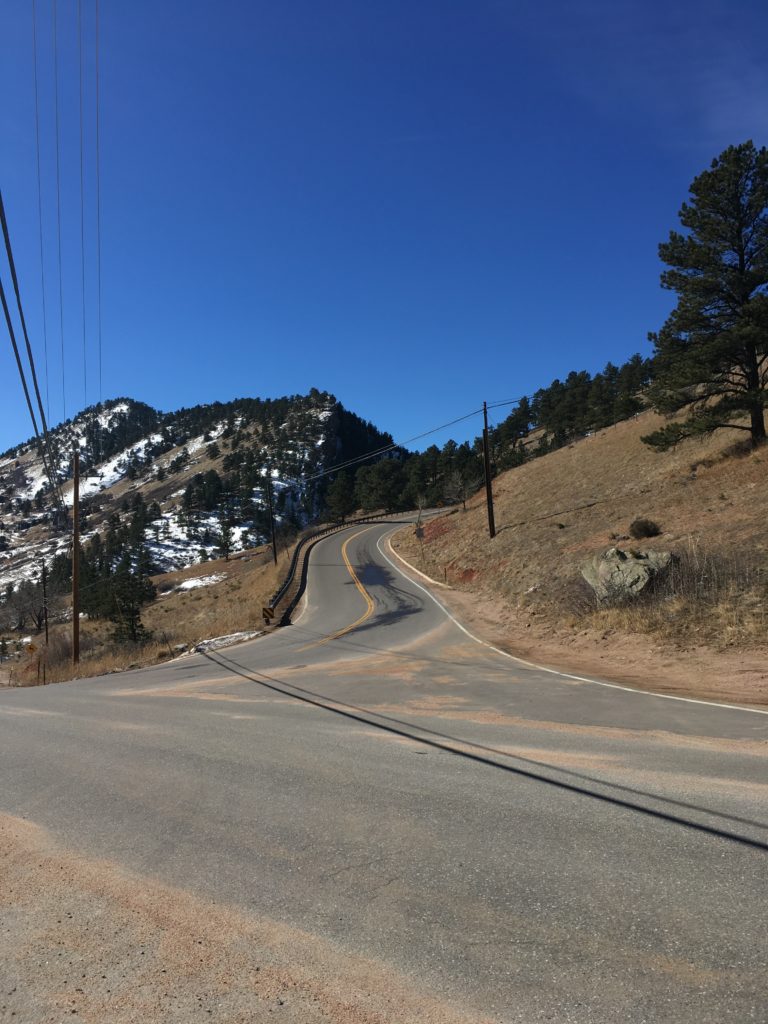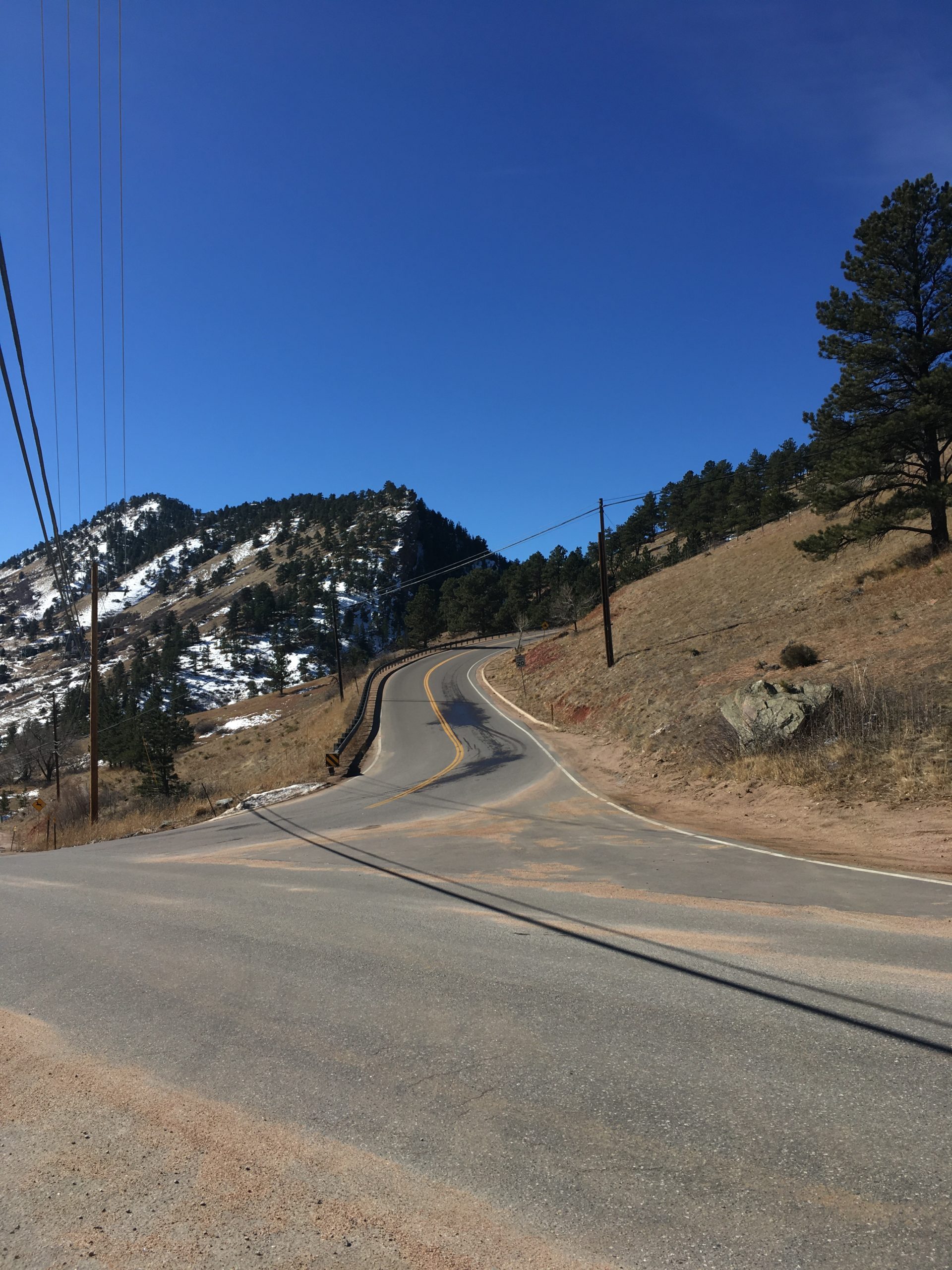For years now, residents along Lee Hill Drive outside Boulder have been increasingly alarmed by behavior they witness from both drivers and bicyclists on Lee Hill. Beginning the summer of 2020, Boulder County, a Lee Hill resident, and C4C began meetings regarding the topic.
A salient example of the problem is what many users have observed. Drivers increasingly overtake bicyclists with three feet of berth, as required by law, but drivers do so in blind curves. Consequently, there are trucks, cars, motorcyclists, and bicyclists all in each others’ close vicinity, sometimes crossing the double yellow line, and impinging upon each others’ opposing lane of travel. Collisions involving oncoming traffic have been narrowly avoided multiple times according to witnesses.
Colorado law allows a driver to overtake a bicyclist by crossing the double yellow but only when it is safe to do so.
The problem can be complex. A cautious driver may encounter a bicyclist in a blind corner and significantly slow their vehicle in order to await a safe place to pass. Other drivers behind that cautious driver may not see or acknowledge the situation and become impatient or even aggravated. From there, the behavior of multiple parties can deteriorate and endanger everyone.
Currently, the County, the resident, and C4C have identified multiple blind corners where the problem seems the worst. The next step is to consider mitigation possibilities at those locations or as a whole on Lee Hill.
Many observers, including officials, have pointed out that the posted speed limit on Lee Hill is 20 or 30 miles per hour based on location, well below speeds at which drivers are observed to be traveling. Vision Zero, a comprehensive safety policy, and other objective analyses point to the crucial role of speed in crashes. One question however is how to achieve compliance with posted speed limits and their role in managing closing speeds and reaction times between vehicles traveling in opposing directions on blind corners.
Enforcement of traffic systems including speed is under scrutiny in many urban and racially diverse areas due to the disproportionate stopping, citing, and sometimes far worse of minority drivers. By that same token though, in Boulder County, the majority of drivers may have a sense of impunity to traveling over the posted speed limit despite the evidence of speeding’s contribution to serious injuries and fatalities.
C4C’s staff has taken a position on the matter of Lee Hill. The challenge is to revisit Boulder County’s Transportation Master Plan and ask ourselves about the plan’s governing principle of prioritizing people over autos on public rights of way. A comprehensive solution flows from allocating resources to the main goals of the TMP that are maintenance, safety, the economy, county character, and equity.
The problem on Lee Hill is representative of mountain and canyon roads across the County. Engineering is typically considered to offer the best transportation and safety outcomes. Engineering combined with right-of-way limitations on mountain and canyon roads can either be impossible to alter or prohibitively costly. What’s left is policy and how, as a citizenry, we decide to live together.
In the meantime, the It Could Be Me movement puts it best. When a driver approaches a bicyclist, runner, pedestrian, flag person, road worker, emergency responder, dismounted law enforcement officer, or any user or vulnerable user of our shared roads; remember, it could be someone you know, it is surely someone whom is loved.

The eastern terminus of Lee Hill Drive


